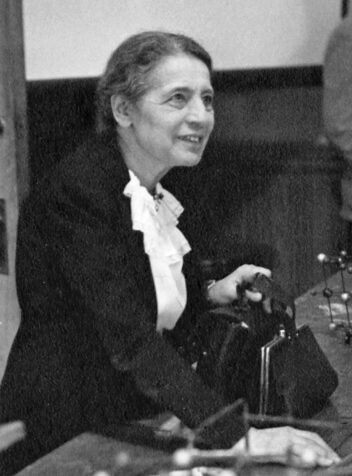The Economic Collapse That Redefined a Nation

Imagine waking up one morning to find that everything you’d worked for had vanished overnight. That’s exactly what happened to millions of Americans on October 29, 1929, when the stock market crashed in what became known as “Black Tuesday.” The Great Depression began in 1929 when, in a period of ten weeks, stocks on the New York Stock Exchange lost 50 percent of their value. This wasn’t just a financial hiccup—it was the beginning of what would become the longest and deepest downturn in the history of the United States and the modern industrial economy, lasting more than a decade, beginning in 1929 and ending during World War II in 1941. The statistics tell a story of unprecedented devastation: Real GDP shrank 29% from 1929 to 1933, while unemployment rose from about 4% in 1929 to a peak of 25% in 1933.
Nearly a third of the banking system failed between 1930 & 1933, wiping out people’s life savings and destroying their faith in financial institutions. The closures resulted in a massive withdrawal of deposits by millions of Americans estimated at near $6.8 billion ($141 billion in 2024 dollars). For ordinary families, this meant losing not just their money, but their sense of security and their belief in the American Dream itself.
The Transformation of Women’s Roles in Society

While men lost their jobs in record numbers, something remarkable happened to women during the Great Depression. For one group of people, employment rates actually went up: women. From 1930 to 1940, the number of employed women in the United States rose 24 percent from 10.5 million to 13 million. This wasn’t because society suddenly became more progressive—it was because the jobs available to women—so-called “women’s work”— were in industries that were less impacted by the stock market.
Some of the hardest-hit industries like coal mining and manufacturing were where men predominated. Women were more insulated from job loss because they were employed in more stable industries like domestic service, teaching and clerical work. The irony wasn’t lost on many families: the very jobs that society had dismissed as “women’s work” became lifelines during the nation’s darkest economic hour. For the first time in the history of the United States, women made up around 25% of the workforce.
However, this increased participation came with a bitter twist. The Great Depression drove women to find work with a renewed sense of urgency as thousands of men who were once family breadwinners lost their jobs. A 22 percent decline in marriage rates between 1929 and 1939 meant more single women had to support themselves. Despite their crucial contributions, women faced enormous hostility and discrimination in the workplace.
The Devastating Impact on Family Structures

Family dynamics were also profoundly affected. In many cases, traditional roles were upended, with men—the primary breadwinners—struggling to find work and women increasingly stepping into roles as wage earners. This role reversal created unprecedented tension within households. Men’s roles also shifted during the Depression. Frequently, they were left to mind the children while their wives went to work. This shift in gender roles led to tension and confusion between husbands and wives, an increase in alcoholism, and a rise in domestic violence.
Between 1929 and 1939, there was a 22% decline in marriage rates, indicating that many couples couldn’t afford to start families or felt too uncertain about the future to make that commitment. The need for dual-income households, although often challenging, began to shift societal expectations around gender roles and responsibilities. What had once been unthinkable—married women working outside the home—became a necessity for survival.
The Rise of Government Intervention and Social Safety Nets

The Great Depression forced Americans to fundamentally reconsider the role of government in their lives. The Great Depression precipitated a significant transformation in the relationship between the American government and its citizens. Faced with unprecedented economic hardship, governmental responses evolved from initial inaction to a series of proactive measures aimed at alleviating suffering and stimulating recovery. President Franklin D. Roosevelt’s New Deal represented a revolutionary shift in American governance.
The Social Security Act of 1935 is a law enacted by the 74th United States Congress and signed into law by U.S. President Franklin D. Roosevelt on August 14, 1935. The law created the Social Security program as well as insurance against unemployment. This wasn’t just another government program—it was a fundamental redefining of the relationship between citizens and their government. The old-age program is funded by payroll taxes, and over the ensuing decades, it contributed to a dramatic decline in poverty among older people, and spending on Social Security became a significant part of the federal budget.
The New Deal established federal responsibility for the welfare of the U.S. economy and the American people. Many of the New Deal programs that bound them together—Social Security, unemployment insurance and federal agricultural subsidies, for instance—are still with us today. The impact was so profound that several organizations created by New Deal programs remain active and those operating under the original names include the Federal Deposit Insurance Corporation (FDIC), the Federal Crop Insurance Corporation (FCIC), the Federal Housing Administration (FHA), and the Tennessee Valley Authority (TVA). The largest programs still in existence are the Social Security System and the Securities and Exchange Commission (SEC).
Educational Opportunities and Youth During the Crisis

The Great Depression had a profound impact on education and young people’s futures. The Great Depression had a lasting impact on the education of children and young adults. Financial hardships led many families to withdraw their children from school to contribute to work. Poverty-stricken families were often unable to afford basic school supplies, leading to diminished educational opportunities for the youth. This created a generation of young Americans whose educational prospects were severely limited by economic circumstances.
However, the crisis also created new opportunities in unexpected ways. The Civilian Conservation Corps (CCC) employed hundreds of thousands of young men in reforestation and flood-control work. Such agencies as the Works Progress Administration (WPA) and the Civilian Conservation Corps (CCC) were established to dispense emergency and short-term governmental aid and to provide temporary jobs, employment on construction projects, and youth work in the national forests. The CCC provided national conservation work primarily for young unmarried men. These programs not only provided employment but also valuable skills and experience for young people who might otherwise have had no opportunities.
Before the Great Depression, the chances of women furthering their education were slim. However, during the drastic economic change, some women (especially those who were unmarried) took the opportunity to attend college. Female students at the University of Washington took on new campus roles during the Depression that challenged gender stereotypes around education, sports, and domestic and social responsibilities.
The Banking Revolution and Financial Security

The collapse of the banking system was perhaps the most visible symbol of the Depression’s impact on everyday Americans. By the end of 1933, 4,004 small local banks were permanently closed and merged into larger banks. Their deposits totaled $3.6 billion. Depositors lost $540 million (equivalent to $13,116,863,753 in 2024) and eventually received on average 85 cents on the dollar of their deposits. This devastation led to one of the most important and lasting changes in American financial history.
The Glass–Steagall Act limited commercial bank securities activities and affiliations between commercial banks and securities firms to regulate speculations. It also established the Federal Deposit Insurance Corporation (FDIC), which insured deposits for up to $2,500, ending the risk of runs on banks. The Glass-Steagall Act of 1933 established the Federal Deposit Insurance Corporation, which effectively insured the savings of Americans in the event of a bank failure, which was all too common at the time.
This transformation of the banking system created a new sense of security for ordinary Americans. No longer would they have to worry about losing their entire life savings if their local bank failed. The Federal Deposit Insurance Corporation (FDIC) in banking and Fannie Mae (FNMA) in mortgage lending are among New Deal programs still in operation. These institutions continue to protect Americans’ financial security nearly a century later.
Community Networks and Mutual Aid

Communities across the country banded together during this tumultuous time, forming support networks to assist those in need. Mutual aid societies, food banks, and community organizations emerged to help families facing hunger and poverty. This grassroots response showed the resilience and compassion of ordinary Americans in the face of unprecedented hardship.
However, the crisis also revealed deep inequalities in American society. Neighborly cooperation became a crucial means of survival; however, it also illustrated the social fractures becoming apparent. Ethnic and racial minorities, particularly African Americans and immigrants, often faced disproportionate challenges due to systemic discrimination in accessing employment and government assistance. This inequity laid bare the longstanding racial divides within American society.
Some 400,000 Mexican-Americans moved out of the United States to Mexico in the 1930s, many against their will. The attitude was ‘they’re taking our jobs.’ Before the Depression, Mexican immigrants were seen as ‘birds of passage’ coming here to do jobs Americans didn’t want to do, like picking seasonal crops. This scapegoating of immigrants during economic hardship would become a recurring theme in American history.
The Psychological and Cultural Impact

The psychological toll of unemployment was significant. For many, work had represented not just a source of income but also a sense of identity and purpose. The inability to provide for one’s family fostered feelings of shame and despair, leading to a rise in mental health issues, including depression and anxiety. This psychological impact extended far beyond the immediate economic crisis.
The Great Depression left an indelible mark on American society. The experiences of this period fostered a collective consciousness that influenced values regarding community, government responsibility, and economic security. The lessons learned from this era would continue to shape societal attitudes towards the economy and social welfare in the decades to come.
Its social and cultural effects were no less staggering, especially in the United States, where the Great Depression represented the harshest adversity faced by Americans since the Civil War. The generation that lived through the Depression carried its lessons with them for the rest of their lives, creating a culture of frugality and self-reliance that would influence American society for decades.
Labor Relations and Worker Rights

The Great Depression fundamentally transformed the relationship between workers and employers in America. The National Recovery Administration (NRA) established codes to eliminate unfair practices, establish minimum wages and maximum hours, and guarantee the right of collective bargaining. The Wagner Act increased the authority of the federal government in industrial relations and gave further organizing power to labor unions under the execution of the National Labor Relations Board (NLRB).
The National Labor Relations Act (Wagner Act) (1935) Reaffirmed the right of collective bargaining, with rules and enforcement by a National Labor Relations Board (NLRB). This legislation gave workers unprecedented power to organize and bargain collectively, fundamentally changing the balance of power between labor and management. The Fair Labor Standards Act (1938) Restored rights lost when the National Industrial Recovery Act was overturned by the Supreme Court: minimum wage and no child labor.
Organized labor grew and was increasingly politicized. Housewives acted like unions and worked together to affect change. Even those not traditionally involved in labor organizing began to see the value of collective action in addressing economic hardship.
Infrastructure and Public Works Legacy

The Great Depression era created a massive public works program that literally rebuilt America’s infrastructure. The WPA financed a variety of projects such as hospitals, schools, and roads, and employed more than 8.5 million workers who built 650,000 miles of highways and roads, 125,000 public buildings as well as bridges, reservoirs, irrigation systems, parks, playgrounds and so on. Prominent projects were the Lincoln Tunnel, the Triborough Bridge, the LaGuardia Airport, the Overseas Highway and the San Francisco–Oakland Bay Bridge.
The WPA gave some 8.5 million people jobs. Its construction projects produced more than 650,000 miles of roads, 125,000 public buildings, 75,000 bridges, and 8,000 parks. These weren’t just make-work projects—they created lasting infrastructure that Americans still use today. The Rural Electrification Administration used cooperatives to bring electricity to rural areas, many of which still operate. Between 1935 and 1940, the percentage of rural homes lacking electricity fell from 90% to 40%.
The impact of these programs extended far beyond their immediate economic benefits. They demonstrated the government’s ability to mobilize resources for massive public projects and created a new expectation that government should play an active role in addressing national challenges.
Long-term Changes in American Values and Expectations

The Great Depression didn’t just change policies—it fundamentally altered American values and expectations about the role of government and society. The Great Depression is not the reason for having a Social Security system; the reason is the problem of economic security in a modern industrialized society. The Depression was the triggering event that finally persuaded Americans to adopt a social insurance system.
Perhaps the greatest achievement of the New Deal was to restore faith in American democracy at a time when many people believed that the only choice left was between communism and fascism. The Depression era proved that democratic institutions could adapt and respond to crisis without abandoning their fundamental principles.
This paper documents a link between these changing patterns of female labor supply and the Great Depression. We find that the onset of the Great Depression led to an increase in young women’s employment in 1930 via an added-worker effect. Cohorts induced into the workforce in the early 1930s had significantly higher employment rates through the 1940s and 1950s of up to 3 percentage points, suggesting a permanent impact of the Great Depression on women’s lifecycle labor supply. The changes initiated during the Depression had lasting effects that extended far beyond the crisis itself.
The Lasting Foundation of Modern American Society

The Great Depression fundamentally reshaped American society in ways that continue to influence us today. The crisis created new institutions, changed social norms, and established new expectations about government’s role in citizens’ lives. Several programs created through the New Deal did have a lasting positive impact on the U.S. economy which was flagging throughout the 1930s, among them the Social Security Act, which provided income for the elderly, disabled and children of poor families.
The transformation of women’s roles during the Depression laid the groundwork for future advances in gender equality. The Great Depression era proved to be a time of increasing involvement and independence among female students that would inspire feminist movements for generations to come. The crisis forced society to confront long-held assumptions about women’s capabilities and roles.
Data from the 1940 Consensus show how the average annual pay for women in the late 1930s was $525, while that for men was $1,027, reflecting the sexual inequality which was rooted in the organization of both the family and the American society as a whole. While inequality persisted, the Depression had opened doors that would never fully close again.
The Great Depression was more than just an economic crisis—it was a transformative period that redefined the relationship between individuals, families, communities, and government in America. The institutions created, the social changes initiated, and the values established during this dark period became the foundation for modern American society. From Social Security to bank deposit insurance, from expanded women’s participation in the workforce to new expectations about government responsibility, the Depression’s impact continues to shape American life today.




